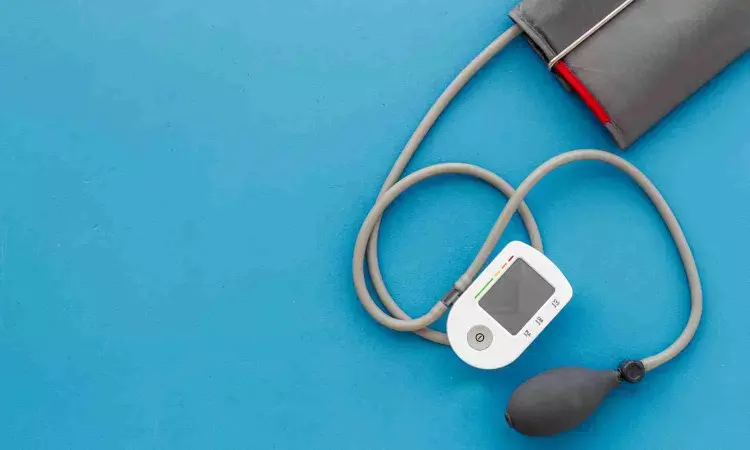- Home
- Medical news & Guidelines
- Anesthesiology
- Cardiology and CTVS
- Critical Care
- Dentistry
- Dermatology
- Diabetes and Endocrinology
- ENT
- Gastroenterology
- Medicine
- Nephrology
- Neurology
- Obstretics-Gynaecology
- Oncology
- Ophthalmology
- Orthopaedics
- Pediatrics-Neonatology
- Psychiatry
- Pulmonology
- Radiology
- Surgery
- Urology
- Laboratory Medicine
- Diet
- Nursing
- Paramedical
- Physiotherapy
- Health news
- Fact Check
- Bone Health Fact Check
- Brain Health Fact Check
- Cancer Related Fact Check
- Child Care Fact Check
- Dental and oral health fact check
- Diabetes and metabolic health fact check
- Diet and Nutrition Fact Check
- Eye and ENT Care Fact Check
- Fitness fact check
- Gut health fact check
- Heart health fact check
- Kidney health fact check
- Medical education fact check
- Men's health fact check
- Respiratory fact check
- Skin and hair care fact check
- Vaccine and Immunization fact check
- Women's health fact check
- AYUSH
- State News
- Andaman and Nicobar Islands
- Andhra Pradesh
- Arunachal Pradesh
- Assam
- Bihar
- Chandigarh
- Chattisgarh
- Dadra and Nagar Haveli
- Daman and Diu
- Delhi
- Goa
- Gujarat
- Haryana
- Himachal Pradesh
- Jammu & Kashmir
- Jharkhand
- Karnataka
- Kerala
- Ladakh
- Lakshadweep
- Madhya Pradesh
- Maharashtra
- Manipur
- Meghalaya
- Mizoram
- Nagaland
- Odisha
- Puducherry
- Punjab
- Rajasthan
- Sikkim
- Tamil Nadu
- Telangana
- Tripura
- Uttar Pradesh
- Uttrakhand
- West Bengal
- Medical Education
- Industry
Blood pressure high for years? Beware of stroke risk, reveals JAMA study

High blood pressure is known to increase a person's chances of having a stroke.
But a study led by Michigan Medicine narrows in on the cumulative effects of years of high systolic blood pressure-the top number on the blood pressure reading and how hard the heart pumps blood to the arteries-finding that a higher average reading during adulthood is linked with a greater risk for the two most common types of stroke.
The study, published in JAMA Network Open, analyzed the average systolic blood pressure years ahead of the first stroke for more than 40,000 people who were 18 years or older with no history of stroke.
Researchers covered three types of stroke: ischemic, a clot that cuts blood supply to the brain and the cause of over 85% of all strokes; intracerebral hemorrhage, a bleed within the brain; and subarachnoid hemorrhage, bleeding between the brain and the tissues that cover it.
They found that having a mean systolic blood pressure that is 10-mm Hg higher than average was associated with a 20% higher risk of overall stroke and ischemic stroke, as well as a 31% greater risk of intracerebral hemorrhage.
“Our results suggest that early diagnosis and sustained control of high blood pressure over the lifespan are critical to preventing stroke, ischemic stroke and intracerebral hemorrhage, especially in Black and Hispanic patients who are more likely to have uncontrolled hypertension than white patients,” said senior author Deborah A. Levine, M.D., M.P.H., professor of internal medicine and neurology at University of Michigan Medical School.
Black patients had a 20% higher risk of ischemic stroke and a 67% higher risk of intracerebral hemorrhage than white patients.
Hispanic patients had a 281% higher risk of subarachnoid hemorrhage, but not any other stroke type, compared to white patients.
While Black and Hispanic patients had a higher risk of stroke, researchers found little evidence to suggest that race and ethnicity affected the association between cumulative systolic blood pressure and the type of stroke that affected any patient.
“Examining racial inequities advances our understanding of the social, economic and political structures that affect health behaviors and risk for stroke among racial and ethnic minority groups,” said Kimson E. Johnson, Ph.D., M.A., M.S.W., first author and postdoctoral research fellow at University of Michigan.
While systolic blood pressure is a modifiable target for preventing stroke and other cardiovascular diseases, a national study conducted in 2020 found that blood pressure control in the United States worsened from 2013 to 2018, especially for Black and Hispanic adults.
Self-monitoring of blood pressure improves blood pressure diagnosis and control and is accurate and cost effective, but it remains an underused tool, Levine says.
“Two major barriers to self-monitoring of blood pressure are lack of patient education and insurance not covering the home blood pressure monitors, which cost $50 or more,” she said.
“Health care systems and providers must educate and urge their patients to do home blood pressure monitoring, and insurers must pay for home blood pressure monitors to optimize people’s blood pressure and reduce their chances of having a stroke.”
Reference:
Johnson KE, Li H, Zhang M, et al. Cumulative Systolic Blood Pressure and Incident Stroke Type Variation by Race and Ethnicity. JAMA Netw Open. 2024;7(5):e248502. doi:10.1001/jamanetworkopen.2024.8502.
Dr Kamal Kant Kohli-MBBS, DTCD- a chest specialist with more than 30 years of practice and a flair for writing clinical articles, Dr Kamal Kant Kohli joined Medical Dialogues as a Chief Editor of Medical News. Besides writing articles, as an editor, he proofreads and verifies all the medical content published on Medical Dialogues including those coming from journals, studies,medical conferences,guidelines etc. Email: drkohli@medicaldialogues.in. Contact no. 011-43720751


